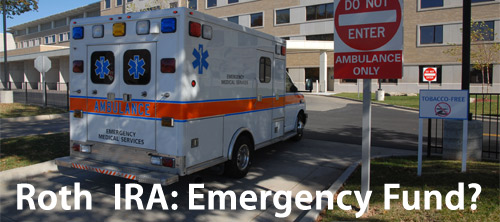Can you open more than one Roth IRA?
This is a good question to ask, because some people seem to be confused when it comes to this issue.
Despite the conventional wisdom, and regardless of what some people may tell you, you can only have one Roth IRA.
Some why do some people believe they have multiple Roth IRAs? The confusion stems from knowing the difference between your Roth IRA account and your Roth IRA custodian or trustee.

Roth IRA Trustees and Custodians
Under federal law, you're required to have a “trustee” or a “custodian” to host or maintain your Roth IRA.
So what constitutes a “trustee” or “custodian”? As a general rule, a trustee or custodian is a federally insured:
- Bank
- Credit Union
- Savings & Loan
- Brokerage House, or
- Other Financial Institution
For example, if you go your local bank, open a Roth IRA, and deposit $5,000 as your annual contribution, your bank is your Roth IRA custodian.
Multiple Trustees and Custodians, But Only One Roth IRA
Under the Roth IRA investment rules, you can have multiple Roth IRA trustees or custodians. But in the eyes of the IRS, you can only have one Roth IRA.
Does that make sense? For instance, you might have $5,000 in a Roth IRA account at Charles Schwab and $10,000 in a Roth IRA account at First Trade Securities. In this case, you have two Roth IRA custodians, but only one $15,000 Roth IRA as far as the IRS is concerned.
One Roth IRA Per Person
In plain terms, you can have one Roth IRA per person, or better stated…
1 Person = 1 Roth IRA
That said, you can have multiple Roth IRAs as a married couple. A married couple can have two Roth IRAs – one in each spouse's name.
But the same rules apply. Even if as married couple you have 12 Roth IRA accounts scattered among 12 different financial institutions, in the eyes of the IRS, you only have two Roth IRAs – all the accounts in your name and all the accounts in your spouse's name.
Know The Difference
Knowing to differentiate between your Roth IRA itself and your Roth IRA custodian may sound like mere semantics, but at certain times, it can prove critical.
For instance, in order to claim Roth IRA losses on your tax return, the IRS you to first close your Roth IRA – meaning you must close all of your custodial accounts. You can't claim a loss on a single custodial account in isolation. The IRS only lets you claim a loss on the sum total of your custodial accounts, which it views as your one and only Roth IRA.
Likewise, when it comes to withdraws from your Roth IRA, whether or not you have to pay taxes and/or penalties is a question subject to specific ordering rules, and those rules apply to all of your custodial accounts as a whole. Not knowing the difference can get you in trouble!
For example, under the IRS ordering rules, Roth IRA withdrawals must be made in the following order:
1) Original Contributions
2) Conversion or Rollover Contributions, and
3) Investment Earnings
Let's say you're 62 years-old and you want to withdraw funds from your Roth IRA. You have two Roth IRA accounts, one with eTrade worth $100,000 ($30,000 in original contributions and $70,000 in earnings) and a second account with Wells Fargo worth $20,000 (a recent conversion).
If you withdraw $50,000 from your eTrade account, the first $30,000 is tax-free and penalty-free because you're simply withdrawing your original contributions. The remaining $20,000 represents investment earnings, and since you're over age 59 ½, you can withdraw those funds tax-free and penalty-free as well – right?
Not necessarily. Under the ordering rules, the remaining $20,000 you withdrew does not represent investment earnings, but conversion contributions. And each conversion you perform is independently subject to the Roth IRA 5 year rule. So if you haven't yet met the requirements of the 5 year rule, then it's possible you owe a 10% penalty on that $20,000 you just withdrew.
$2,000 is an expensive price to pay for not knowing and understanding the Roth IRA withdrawal rules. So make sure you understand the difference between your Roth IRA as it relates to the IRS and your Roth IRA custodian(s)!
This is a guest post from Britt at http://www.your-roth-ira.com, the Web’s #1 resource for Roth IRA information.


